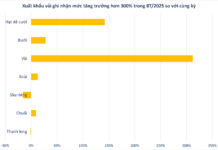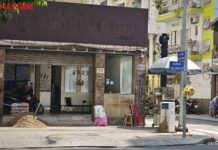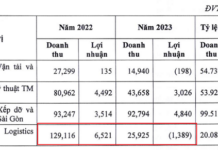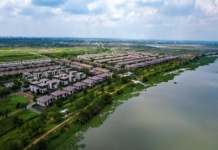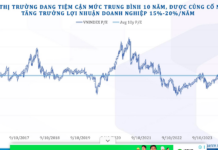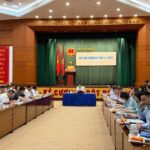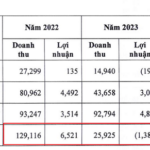Specifically, at the “Power Supply for the 2024 Dry Season” seminar held on the afternoon of April 08, Mr. Trung stated that 2024 is a year of relatively strong growth in electricity demand in the country. The growth rate of electricity demand for the entire economy is increasing by 9.6%/year, and this rate has only appeared since 2018.
“In the first months of the year, the electricity demand of the national power system and the Northern region in particular increased by about 11%. Those are the months when it is not hot yet. From May to July, when it is hotter, the growth rate could reach 13%” – quoted Mr. Trung.
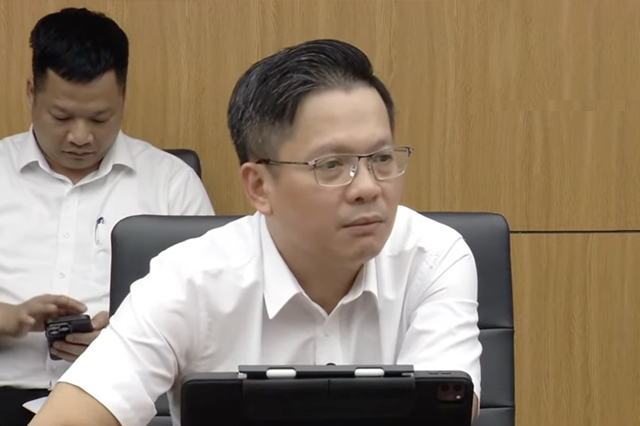 Mr. Nguyen Quoc Trung – Deputy Director of the National Power System Dispatching Center (A0). Screenshot
|
The A0 Deputy Director said that the electricity demand in the North, both industrial and residential, is around 25,000 MW. With an increase of 10%/year, it is the equivalent to 2,500 MW, a huge number.
“This increase means that every year we need to have an additional Son La hydropower plant put into operation to meet the demand. This is a challenge for the electricity industry”.
Anticipating these difficulties, Mr. Trung said that A0 has strategies in place to prepare. For hydropower, A0 has a strategy of storing water in reservoirs to use when needed. To date, about 11 billion kWh of electricity has been stored in hydropower reservoirs (last year only about 7 billion kWh was stored).
He said that the main reservoirs such as Lai Chau are at a higher water level than in the same period last year; Son La is more than 10m higher; Hoa Binh is more than 4m higher. These are active reserves to meet the dry season.
“Currently, we do not see anything, but the effects will be very clear in the dry months. The demand is increasing objectively, but there must be appropriate solutions to meet it.”
In addition, A0 has been working with local authorities, with the support of the Ministry of Industry and Trade, to maximize water saving for downstream needs. It is necessary to ensure a balance between downstream needs and water for power generation. A0 has managed to save 1 billion m3 of water compared to the original plan. This is a very valuable source for EVN and for the socio-economic development of the North, when energy is stored in hydropower reservoirs.
LNG-fired power plants to run from April 15, 2024
With other fuels, A0 has developed scenarios and has had to run the most “expensive” power sources, such as using D.O. Notably, Mr. Trung revealed that the Vietnam Electricity Group (EVN) has also directed its units to put the new energy source of liquefied natural gas (LNG) into operation.
“Currently, EVN is negotiating and signing contracts with gas suppliers to be able to operate the LNG source at the power plant in the Southeast region on April 15, 2024. This is also the first time we have used LNG for power generation. In my opinion, this is an effective solution to provide additional electricity for the country.”
For coal-fired thermal power and gas turbines, EVN and non-industry units have received instructions from the Ministry of Industry and Trade and the Regulatory Authority to review and prepare spare parts for coal fuel and the ability to use the generators. At present, coal in Vietnam accounts for about 50% of production, and any problems could have a significant impact.
In terms of operating solutions, Mr. Trung said that A0 has worked with the Northern Power Corporation to review small hydropower plants. Although small, the total capacity of this group is up to nearly 5,000 MW in the North, with a total number of units of nearly 300.
“We will work to shift the peak hours so that they occur when customers use the most electricity. From May to July, there will be additional demand from 9pm to 11pm (due to the hot weather, and this is the peak period). A0 will also adjust these plants to generate power exactly at that time. The workload is large, but we will be able to do it because we have experience.”
In addition, A0 has cooperated and calculated to maximize the transfer of electricity from the Central and Southern regions to the North, in the context of two 500 kV power lines to meet the load in the North.
“It will be necessary to monitor 24/7, set automatic mode to alert when the transmission capacity reaches the threshold. Maintenance will be postponed to the rainy season, the water accumulation season. We also calculate to develop demand-side management, providing signals for electricity saving. At the same time, we will work closely with customers to save electricity at the right time and in the right place, and to shift demand to the time slots that are most efficient for the economy.”

